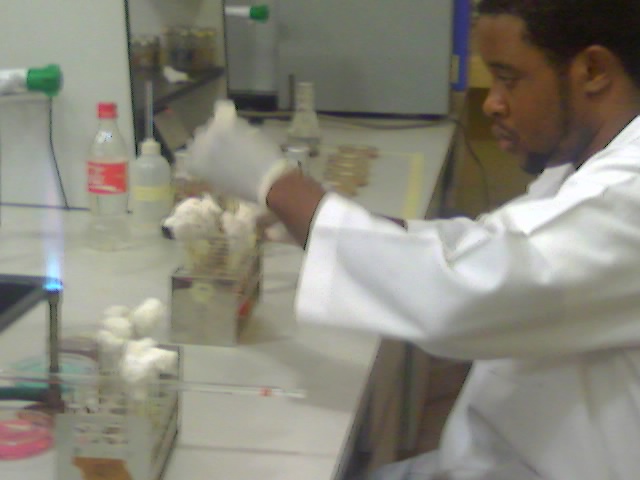Trypan blue is defined as a dye or stain that enables us to distinguish between living and dead cells. The trypan blue dye passes through the cell membrane of the dead cells; and this allows the dead cell to take up the colour of the dye.
This way, the dead cells appear blue under the microscope when viewed. However, living cells do not take up the colour of the trypan blue dye. Unlike dead cells, the cell membrane of the dead cells is not porous to allow for the penetration of the dye into the cell. Thus, living cells appear mostly clear or transparent when viewed under the microscope.
When cells (including microbial cells, plant and animal cells) die, their cell membrane becomes leaky or porous. The porosity or leaky nature of the cell membrane of the dead cell allows the trypan blue dye to easily penetrate and enter the dead cells after passing the cell’s membrane. But this is not the case for living cells with intact cell membrane that does not allow the trypan blue dye to penetrate it.
Once the trypan blue dye passes the cell membrane of the dead cell and enters it, the trypan blue dye remains within the cell and the cell assumes the colour of the dye. This is why the dead cells stained with trypan blue dye appears blue under the microscope while living cells appear clear or transparent.
Non-viable cells = dead cells
Viable cells = living cells
Generally, living cells or viable cells excludes the trypan blue dye while dead or non-viable cells take up the dye and retain its colour.
Uses of trypan blue dye
- It is used for counting cells.
- It is used to differentiate living (viable) cells from dead (non-viable) cells.
- It is used to ascertain cell morphology.
- It is used to ascertain cell viability.
It is important to ensure not to allow the trypan blue to remain too long with the cells after mixing both together. Always ensure to view the cells few seconds or minutes after mixing cells with the trypan blue dye. This is important for the counting process in order not to get a false positive result.
Normally, a particular volume of the trypan blue dye (e.g. 20 µl) should be added to an Eppendorf tube or microcentrifuge tube first; then an equal volume of the cells whose viability is to be ascertained or counted (e.g. 20 µl) should be added next to it. The cells and trypan blue dye should be mixed by pipetting method. Pipetting should be done gently; and this can be done about two to three times in order to ensure even mixture of the cells and the trypan blue dye.
Haemocytometer
Haemocytometer is a device used for counting cells. It is a modified microscope slide containing chambers into which cell suspensions are gently added. The cell suspension is usually diluted with about 10-20 µl of trypan blue dye.
The normal haemocytometer is divided into 9 large squares (that has a grid pattern), and each of these squares has the same dimensions that contains about 104 ml of the cell suspension.
The rules for counting cells usually differ from one laboratory to another. When counting cells in the haemocytometer, it is important to count more squares instead of just counting cells in only one or two squares. The more squares you count, the more accurate your cell count will be.
Discover more from #1 Microbiology Resource Hub
Subscribe to get the latest posts to your email.



